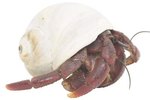How to Know if a Salamander is Sick. Salamanders are a popular pet among children and adults alike. However, like other pets, disease and illness are constant threats. Learn how to identify the beginning signs of a salamander illness or disease and keep your salamander in top health.
Remember any past injuries to your pet salamander. Cuts, abrasions and scrapes can breed illness, as the wounds on your salamander's body can attract and harbor harmful bacteria.
Inspect the salamander's skin for burns and signs of fungal infections. White or red spots and patches on your salamanders may indicate that your salamander has been burned or has a fungal infection that needs to be treated.
Note the elasticity of your salamander's skin. Wrinkly, overly-soft or slippery skin may indicate an abnormal condition.
Look at your salamander's legs and feet for signs of swelling.
Watch your salamander's behavior. Lethargy, walking impediments, restricted mobility of one or more digits, and refusal to eat can signify that your salamander is ill.
Quarantine your salamander. Separating your salamander from others ensures a containment of the disease or illness and provides your salamander with a controlled, healthy space in which to get well.
Use medications, homemade and prescribed, wisely. Salamander skin is very porous and treatment of diseases or illnesses should be done only when considering their sensitivity. Treating a salamander for an illness or disease that they do not have or over-medicating a salamander may have disastrous effects.
Tips
Familiarize yourself with ways in which to lower your salamander's susceptibility to disease. Keeping your salamander in a clean, maintained, stress-free habitat with an appropriate temperature greatly reduces your salamander's chances for illness. Consult a veterinarian that specializes or has experience diagnosing diseases of exotic animals if problems persist.
Warnings
Some salamander diseases are much more dangerous than others. The "Salamander Plague" is a salamander disease that begins with one open wound that spreads to other areas of the body. This type of disease should be treated professionally, as the salamander will suffer under improper and inadequate treatment.
Writer Bio
This article was written by the CareerTrend team, copy edited and fact checked through a multi-point auditing system, in efforts to ensure our readers only receive the best information. To submit your questions or ideas, or to simply learn more about CareerTrend, contact us [here](http://careertrend.com/about-us).





